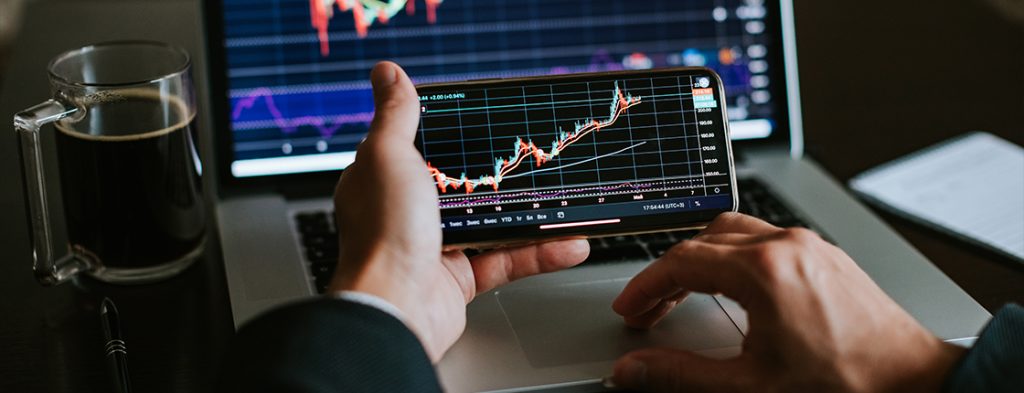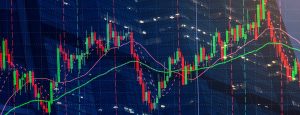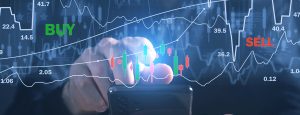Forex trading is all about making informed decisions quickly. Live charts are the ultimate tool helping traders stay on top of market trends. But if you’re not sure how to read and interpret them, they can feel overwhelming. This guide will walk you through the basics of live forex trading charts and how to analyze them like a professional.
By the end of this forex guide, you’ll be equipped to effectively interpret live forex charts, identify key trends, and make smarter trading decisions—applying this to platforms like PMEX and beyond.
What is a Forex Trading Live Chart?
Before we get started, it’s important to define what forex trading live charts are. Simply put, they are graphical representations of the live movement in currency pairs within the forex market. They showcase how a specific pair (e.g., EUR/USD) is behaving in real-time, allowing you to spot trends, price movements, and opportunities for profitable trades.
Why Mastering Live Charts is Essential for Forex Traders
Learning to read live charts is fundamental to success in forex trading for a few reasons:
- Quick Decision-making: Live charts instantly present critical data required to open or close trades.
- Spot Trends: Understanding live charts helps you identify patterns, allowing you to anticipate market movements.
- Risk Management: Accurate interpretation of charts minimizes trade risks and maximizes potential profits.
If you’re interested in commodities and forex trading with platforms like PMEX or Floret Commodities, chart analysis is particularly crucial in monitoring activity within commodities markets and beyond.
Essential Components of Forex Trading Live Charts
To start reading live forex charts confidently, you need to familiarize yourself with the essential data points they display.
1. Currency Pair
At the top of any forex chart, you’ll find the currency pair being analyzed, such as GBP/USD or JPY/EUR. The first currency in the pair (the base currency) is compared against the second (the quote currency). Forex traders aim to predict whether the base currency will strengthen or weaken against the quote.
2. Timeframe
Charts are segmented by timeframes—from 1-minute intervals to year-long trends. Day traders typically focus on shorter timeframes (e.g., 1-minute, 5-minute, or hourly), while swing or long-term traders prefer daily, weekly, or even monthly charts.
3. Price Action
Price action refers to the movement of a currency’s value on the chart. This is most prominently displayed by candlesticks, line charts, or bar charts (more on this below). Observing price trends guides your buying and selling strategies.
4. Volume
This data displays trading activity levels during a specific timeframe. Higher volumes can act as a confirmation of strong market movements.
5. Indicators
Indicators are technical tools applied to charts to provide clearer insights into price patterns. These can include moving averages (MA), relative strength index (RSI), and Bollinger Bands.
Different Types of Forex Live Charts
Forex live charts come in various types tailored to meet specific trading styles. Here are the three most common ones:
1. Line Charts
Line charts are the simplest form of representation. They connect closing prices over a period, offering a clean and clutter-free view of trends. Line charts work best when you want a quick overview, but they lack the depth of detailed analysis.
2. Candlestick Charts
Candlestick charts are perhaps the most widely used type. They provide valuable details about price action within specific timeframes, including opening price, closing price, high, and low. The body of the candlestick indicates price movement direction (green for upward and red for downward).
3. Bar Charts
Bar charts serve a similar purpose to candlestick charts but appear in a vertical bar format. While less visually intuitive than candlesticks, it still provides the same valuable data (open, close, high, low).
Steps to Read Forex Trading Live Charts Like a Pro
Follow these six steps to develop your live chart interpretation skills.
Step 1: Choose the Right Trading Platform
Start by selecting an intuitive platform for forex trading. Brokers like PMEX or Floret Commodities provide streamlined tools, reliable live chart data, and updated commodities market insights to help beginners make sense of the forex landscape.
Step 2: Set Your Timeframe
Do you want short-term trades or are you focusing on long-term trends? The ideal timeframe depends on your trading strategy, whether it’s scalping, day trading, or swing trading. Shorter timeframes show granular details, while longer ones reveal broader trends.
Step 3: Focus on Support and Resistance Levels
Mark the support and resistance levels on your chart. A support level is where prices consistently stop falling, while a resistance level is where they stop rising. These benchmarks are vital for identifying potential entry and exit points.
Step 4: Use Indicators to Spot Trends
Trends in forex trading determine price momentum. Key indicators, such as moving averages, allow you to distinguish between bullish (upward) and bearish (downward) trends. Additionally, RSI can help identify overbought or oversold conditions, while Bollinger Bands show price volatility.
Step 5: Monitor Real-time Price Action
Real-time price action represents the ongoing movement during active forex trading sessions. Pay close attention to candlesticks, especially patterns like doji (indecision) or engulfing candles (shift in momentum), to predict upcoming trends and reversals.
Step 6: Stay on Top of the News and Commodities Market
Trading in forex can be heavily influenced by political events, economic releases, and commodities market fluctuations. Platforms like PMEX provide updates on changing commodity prices and key trading events as they occur, keeping you one step ahead.
Common Mistakes to Avoid When Analyzing Forex Charts
Even pros make mistakes, so here are some pitfalls forex traders should avoid:
- Ignoring Timeframes: Switching between multiple timeframes without consistency can lead to conflicting decisions.
- Overloading with Indicators: Too many indicators create clutter and confusion. Stick with 2-3 reliable tools.
- Failing to Confirm Trends: One signal isn’t always conclusive. Use multiple indicators to confirm trend reversals or continuations.
- Trading Without a Plan: Without a structured trading plan, emotional decisions can lead to significant losses.
Why Live Chart Analysis is Key to Commodity Trading
If you’re exploring commodities like gold, silver, or crude oil in the commodities market, advanced chart skills are indispensable. The principles of support, resistance, and volume apply to commodity trading, alongside forex trading. By analyzing live charts on platforms like PMEX, you can seamlessly align your forex guide strategies with commodities markets.
Take Your Forex Trading to the Next Level
Becoming proficient in live forex chart reading doesn’t happen overnight, but with dedication, tools, and practice, you can develop the skills to trade confidently.
Looking for a reliable platform to enhance your trading experience? Start exploring PMEX or Floret Commodities both catering to forex, commodities, and broader market needs.
It’s a real-time chart that shows how currency pairs move in value, helping traders spot trends and make quick decisions.
It shows the currency pair, timeframe, price action, trading volume, and indicators like Moving Averages or RSI.
Yes, the same ideas work for commodities like gold and oil. Platforms like PMEX offer live charts for commodities too.



